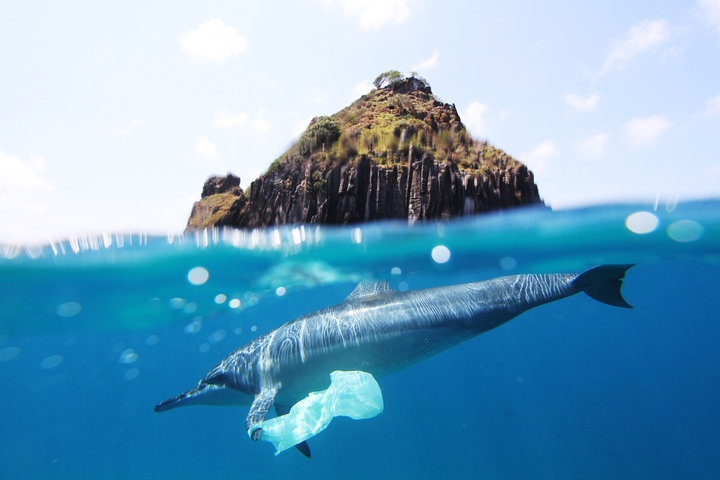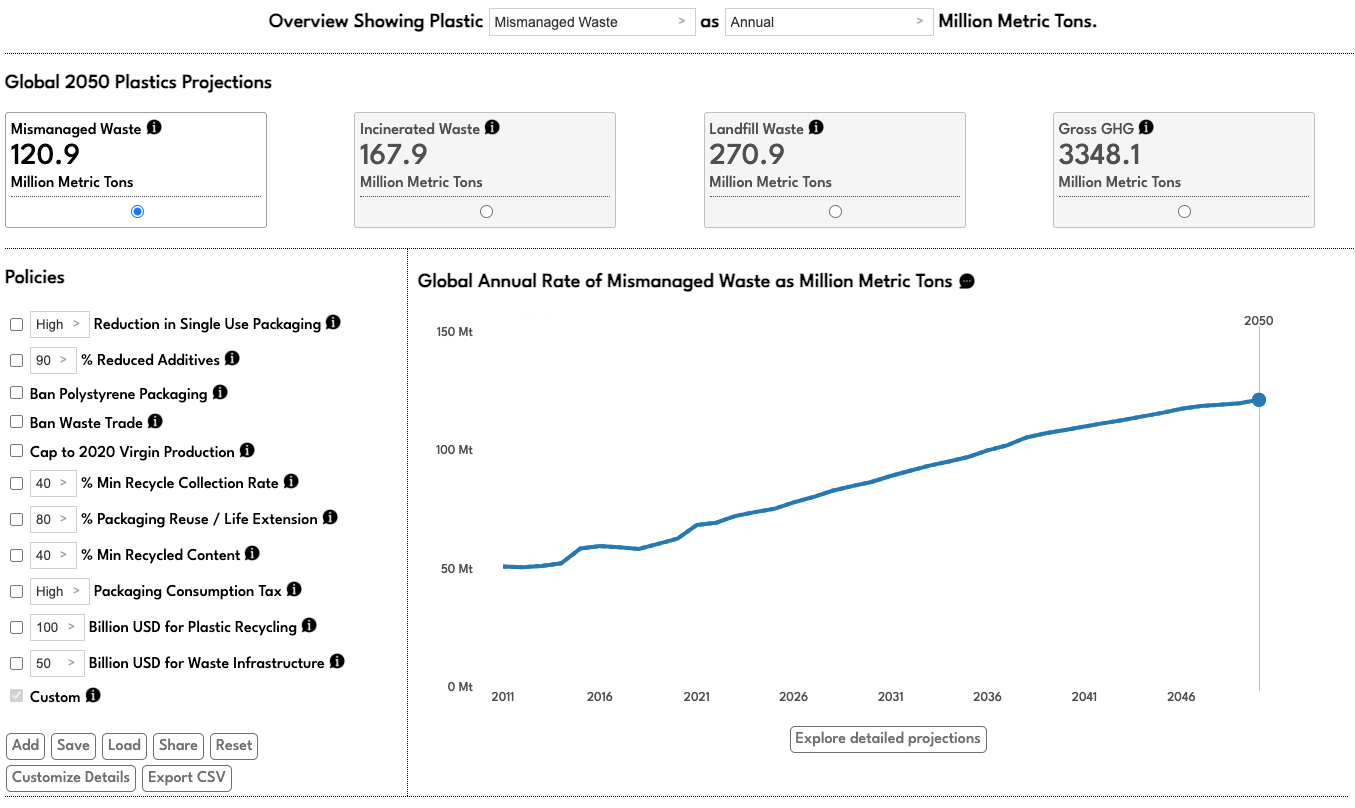
A new study in Science maps out a comprehensive plan to eliminate plastic pollution by 2050
UC Santa Barbara researchers and their colleagues estimate that without intervention, plastic pollution is on track to double by 2050. But in a study published in the journal Science, these same scientists report that this all can be avoided.
Global leaders have the ability to nearly put an end to plastic pollution by 2050 through a United Nations (UN) international treaty set to be completed at a final meeting in Busan, Republic of Korea, taking place Nov. 25 to Dec. 1. If policy makers implemented just four policies acting across the plastic lifecycle (from production to use and disposal), according to the researchers, we could reduce plastic pollution by 91%.
“This study demonstrates how far we have come in not just quantifying the manifold problems surrounding plastics, but also in identifying and evaluating potential solutions,” said industrial ecologist Roland Geyer, a professor at UCSB’s Bren School of Environmental Science & Management and co-author of the study. “I am very proud of what our team was able to achieve in time for the final round of negotiations for the global plastics treaty.”
“One of the most exciting discoveries in this research was seeing that it is actually possible to nearly end plastic pollution with this treaty,” said fellow co-author Douglas McCauley, a professor of marine ecology at UCSB, and director of the campus’s Benioff Ocean Science Laboratory (BOSL). “The problem has grown so large I wasn't sure when we broke ground on this research whether any kind of treaty could make a dent.”
Using data to turn the tide on a bleak future for people and planet
According to the UN, “the high and rapidly increasing levels of plastic pollution represent a serious environmental problem at a global scale, negatively impacting the environmental, social and economic dimensions of sustainable development.” Plastic pollution is also associated with diverse human health impacts (such as cancers, cardiovascular disease and reproductive health problems) and has created significant environmental justice issues for the globe’s most vulnerable communities.
In 2021 alone, humankind mismanaged 68 million metric tons of plastic waste, or the equivalent of 380,000 747 airplanes. By continuing with a business-as-usual approach, the world would generate

enough litter between 2010 and 2050 to cover Manhattan in a pile of plastic 10 times the height of the Empire State Building. There is now an opportunity to fix this, when 190 delegates meet in Busan to finalize the historic international legally binding treaty on plastic pollution.
A bleak future for people and the planet can be rewritten, the researchers said, if negotiators adopt some of the more impactful solutions brought to light in the paper. The four high impact policies that surfaced in this study include: requiring that new products be made with 40% post-consumer recycled plastic; capping new plastic production at 2020 levels; investing significantly in expanding waste management infrastructure, especially in lower-income parts of the world; and implementing a small fee on plastic packaging.
The UCSB paper, “Pathways to reduce global plastic waste mismanagement and greenhouse gas emissions by 2050,” is an evolution of the team’s ongoing efforts to provide the resources needed to finalize an ambitious treaty at these negotiations. The research is linked with an online, open-source, AI-powered dashboard (the Global Plastic Policy Tool) that allows treaty negotiators to build their own forecasts, based on groundbreaking regionalized data. The tool lets decision-makers mix and match potential interventions, and even customize and change the structure of specific policies, to see what impact they have on plastic pollution and greenhouse gas emissions.

“The science powering this study is really exciting. I wouldn’t have dreamed it possible that artificial intelligence and data science would have advanced to the point where we can now forecast the outcomes of dozens of different potential treaty options live for negotiators,” McCauley said.
“This is a novel tool that is not prescriptive to policy makers, and they can combine various policies as they see fit," added Nivedita Biyani, a researcher on global plastic modeling in BOSL.
A significant co-benefit illuminated by this research is the win-win opportunity in the upcoming global plastics treaty to reduce greenhouse gas emissions and fight climate change while also meeting the primary goal of reducing plastic pollution. This arises from the fact that almost all plastics are made from oil and gas and the full emissions footprint of the global plastic industry — from oil and gas drilling to the open burning of plastic waste after it is thrown away — is significant. The researchers found that the same four-policy package that nearly eliminates plastic pollution could reduce harmful greenhouse gas emissions by one-third; the equivalent of taking nearly 300 million vehicles off the road for a year.
If no action is taken in Busan, they noted, annual plastic consumption will rise 37% between 2020 and 2050, and plastic waste will jump 62% between 2020 and 2050. Greenhouse gas emissions related to plastic would jump 37% from 2020 levels to 3.35 gigatons of carbon dioxide equivalent in 2050 — the same as nearly 9,000 natural gas-fired power plants operating for one year, or the energy use for more than 436 million homes for one year.
“This is it. These upcoming negotiations are our one chance to come together as a planet and fix this problem,” McCauley said. “I'm cautiously optimistic, but we can’t squander this once-in-a-lifetime opportunity.”
Additional authors on the paper include UC Santa Barbara’s Neil Nathan, Molly R. Morse and Elijah Baker; and UC Berkeley collaborators Sam Pottinger, Ciera Martinez, Magali de Bruyn and Carl Boettiger.



